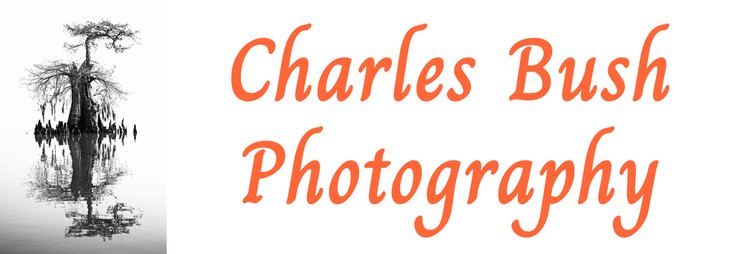For 24 years, I used Nikon DSLR cameras and Nikkor lenses. My go-to lens for bird photography was the Nikkor AFS 600mm f/4 lens, which I bought in 1997. The camera, lens, and tripod head weighed almost 25 pounds, and lugging them around had become too much for me. Also, my hearing and eyesight were deteriorating, making me consider other options for pursuing my passion.
I am grateful for the technological advancements that allow me to create stunning images despite the challenges of aging. The evolution of camera technology, computer capabilities, and improvements in my health have all played significant roles in maintaining and enhancing my photographic journey.
Camera Developments That Enable Me to Continue Making Photographs
Self Portrait with my 600mm f/4 in 2007
New Lighter Mirrorless Cameras and High-Quality Light Telephoto Lenses
The shift to mirrorless cameras has been a game-changer. These cameras are significantly lighter and more compact than their DSLR counterparts, reducing the physical strain of carrying heavy equipment. Additionally, advancements in telephoto lenses mean I can have a long telephoto lens without the bulk, making it easier to capture distant subjects. I've been using the excellent Nikkor 600 mm and 800 mm Phase Fresnel (PF) lenses, which are a fraction of the weight of my 600 mm f/4, with superior results. The 600 mm PF lens can be comfortably used hand-held, and the 800 mm lens on a tripod and head are approximately ⅓ the weight of the 600 f/4 and, for short sessions, can also be hand-held.
Red Shouldered Hawk photographed hand-held in a boat with an 800mm PF lens
Incredible Subject Detection Autofocus
Modern autofocus systems are incredibly advanced, with subject detection capabilities that were unimaginable just a few years ago. These systems can quickly and accurately lock onto subjects, whether birds in flight or fast-moving animals, ensuring sharp and focused images with minimal effort on my part. The camera's ability to track a bird's eye enables me to nail the focus, although my reflexes and vision are not as good as they were.
High Frame Rate and Large Buffer Capacity
The ability to shoot at high frame rates with large buffer capacities allows me to capture fast-action sequences effortlessly. This is particularly useful in wildlife photography, where every millisecond counts. With my Z8, I can take 20 Frames per second, increasing the likelihood of getting the perfect shot.
Improved Noise Performance
Advancements in sensor technology have greatly improved noise performance, allowing me to shoot at higher ISO settings without compromising image quality. This is crucial for low-light conditions and ensures that my images remain clear and detailed, even in challenging lighting situations.
Improved Vibration Reduction
Image stabilization technology has advanced significantly, significantly reducing the effects of camera shake. This is especially beneficial when shooting handheld and using a tripod when it is not feasible. Improved vibration reduction ensures that my images are sharp and blur-free, regardless of the circumstances.
Landscape Photography The new technology has benefited not just bird photography. Electronic Viewfinders have improved the ability to see and focus in dim light, and focus peaking indicators enable me to view what is and is not in focus even though my vision is not as good as it once was.
Computers That Enable Me to Continue Making Photographs
Improved Computer Capacity and Speed
The increased computer processing power and storage capacity have revolutionized how I handle and edit my photographs. I can process large RAW files quickly and efficiently, allowing a seamless workflow from shooting to final edits. This has become essential as the resolution of modern cameras continues to increase.
Incredible Noise Reduction Software
Advanced noise reduction software has enabled me to shoot at much higher ISO settings, enabling higher shutter speeds and improving the keeping rate of fast-moving subjects. This software effectively reduces noise without sacrificing image quality, allowing me to produce clean and detailed photographs even in less-than-ideal lighting conditions.
Mockingbird Photographed at ISO 12,800 to freeze the action
High-Quality Sharpening Software
The latest sharpening software can mitigate motion and focus blur, enhancing my images' overall sharpness and clarity. This technology is invaluable for ensuring that my photographs are as crisp and detailed as possible, even if the original shot was slightly off.
Health
Cataract Surgery
Undergoing cataract surgery has significantly improved my vision, allowing me to see details more clearly. This enhancement in my ability to see has directly impacted my photography, as I can now better identify and focus on subjects, leading to more precise and accurate shots.
In addition, the surgery improved my color vision, prior to the surgery, I had a yellow green color csst on everything, effecting the way I processed images, now with the improved color vision, images that I've processed should appear more accurate to others viewing them.
Hearing Aid
With the help of a hearing aid, I can now hear birds and other wildlife more clearly, aiding in locating and identifying subjects. Improved hearing has enriched my overall experience in nature and allowed me to capture moments I might have otherwise missed.
Conclusion
The intersection of advancing technology and personal health improvements has enabled me to continue creating beautiful photographs as I get older. As the tools at my disposal evolve, I remain excited and motivated to explore new photographic opportunities and capture the world around me with renewed clarity and enthusiasm.




